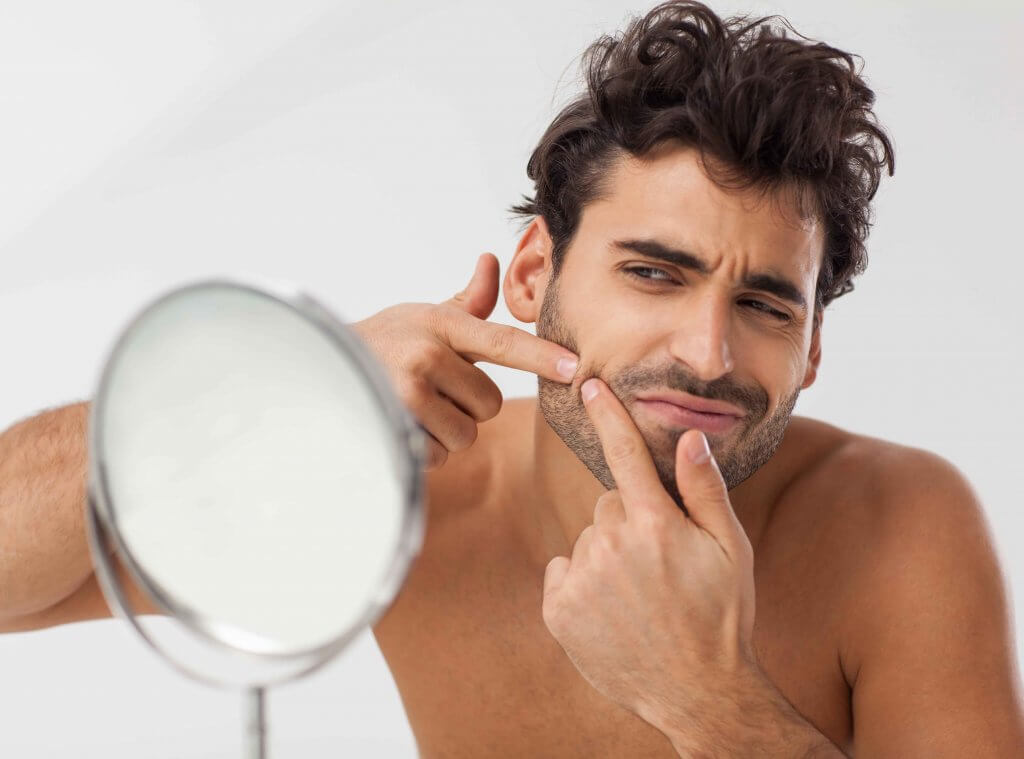To Pop a Pimple or Not... That is the Question!
By Cynthia Bailey MD.
The art or disastrous consequences of pimple popping explained
How bad is it to pop a pimple?
Popping a pimple can be a good thing… or a really bad thing to do. It all depends on if the pimple is ready and how you pop it.
What can happen when you pop a pimple?
Possible outcomes from popping a pimple include:
-
- The pimple may heal faster and everything may turn out well.
- You may increase the risk of developing a scar if the pimple is not ready to be popped. Your attempt to pop it may create additional trauma to the skin.
- The skin may become infected when you traumatize it or open it up during your attempt to pop the pimple. This can lead to a painful sore that heals with scarring. It can even lead to serious illness. That’s because opened wounds, such as popped pimples, are “portals of entry” for germs that cause impetigo, cellulitis, “flesh eating” necrotizing fasciitis, etc. (gross!)
- A rare injury to the brain called cavernous sinus thrombosis can happen if a pimple in the “danger triangle” is popped and the pus travels into deeper tissues of the face instead of out the skin. The danger triangle is the area around your nose and upper lip. And it’s dangerous because blood vessels in this area of your facial skin pass directly into the brain. If pus enters those blood vessels, it can enter the brain and lead to neurologic damage, blindness and even death. This disastrous consequence is a rare problem with the advent of modern antibiotics, but it is still a real risk. Popping pimples is not always a trivial grooming activity.
 Here are my pearls of dermatologic wisdom about pimple popping. These are the best tips to reduce the risk of scarring and infection.
Know though that popping a pimple is always at one’s own personal risk:
Here are my pearls of dermatologic wisdom about pimple popping. These are the best tips to reduce the risk of scarring and infection.
Know though that popping a pimple is always at one’s own personal risk:
- Don’t pop a pimple before its time. Wait until your pimple has a firm white head, indicating that the white blood cells are grouped in the pore and ready to be extracted. Don’t try to pop a pimple that’s still just a hard, red bump because it’s still a solid collection of inflammation and there is no collection of pus extract. You’ll do more harm than good trying to do anything with a pimple like this.
- Wash your fingers well. Use warm water, soap and a fingernail brush before you begin.
- Sterilize a straight pin with a match or lighter. Let the pin cool and then wipe off the black carbon char with rubbing alcohol. Either pour somealcohol on your fingers (alcohol is flammable so keep it away from flames), or wrap them with clean Kleenex tissue as an extra precaution against introducing dirt or bacteria into the burst head of the pimple.
- Use the pin to gently pierce the head of the pimple. Approach the pimple parallel to your skin surface. Pass the pin through the very tip of the white center, and then lift up the skin with the pin to open a tiny hole. This should not hurt if the pimple is ready.
- Gently squeeze and press around the base of the pimple. The pus should come to the surface and out the tiny hole you made in the white tip. Don’t press down on the zit; try to get underneath it so that the pus comes to the surface instead of going farther down into the pore or ruptures out of the pore into the deeper tissues of your skin. Very importantly, don’t scratch or gouge the skin because this leads to scarring.
- Finish by applying more rubbing alcohol. (This will sting!) Another option is to apply a very small amount of bacitracin ointment to the now-deflated pimple.
- Never pop a pimple in the danger triangle!
